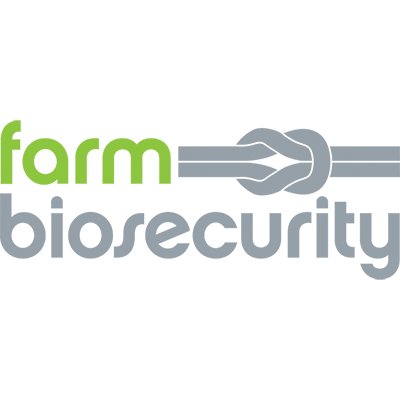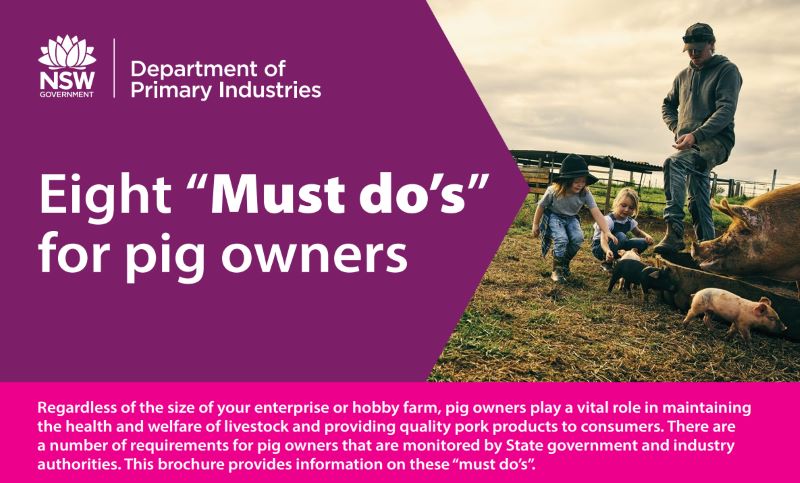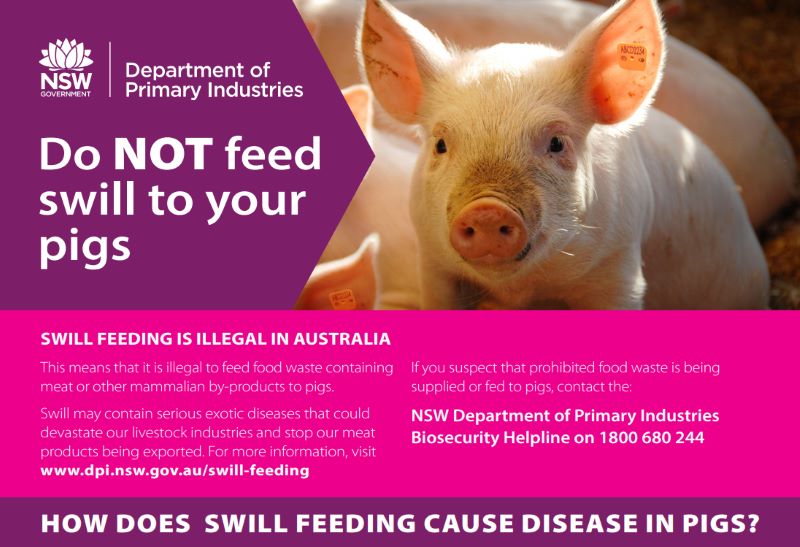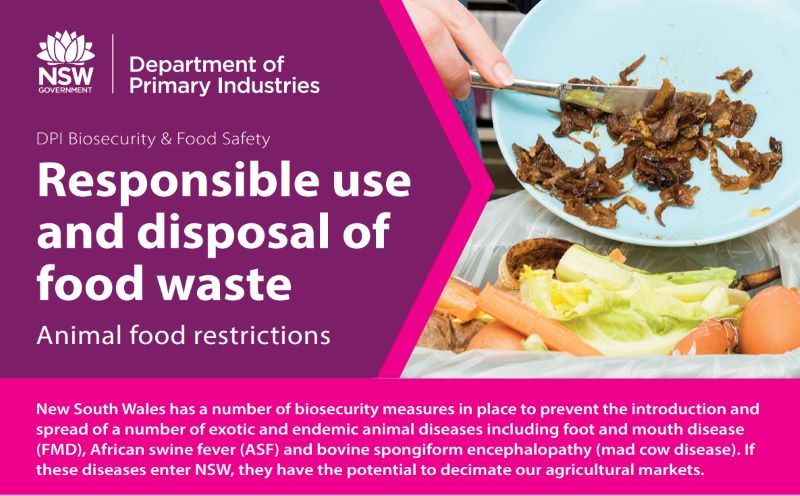Best practice biosecurity
In the pork industry, best practice biosecurity is dependent on some key areas:
- Pig health – pigs should be regularly checked to ensure they’re healthy and actions taken to treat them as well as reduce the spread of pathogens if they are not. Keeping records is an important aspect of monitoring pig health.
- Pig feed – pigs should have access to high quality feed and water, and above all, should never have access to prohibited pig feed or “swill”.
- Controlled entry – people, vehicles, and other animals can introduce diseases to pigs and so it is important to use signs, fences, and gates to control access to sheds, paddocks, and other areas where pigs are housed.
- Transport – all movements of pigs must be registered through the PigPass system, which requires pigs to be identifiable with an approved ear tag or a tattoo/brand during transport. It is also important vehicles used to transport pigs are cleaned between loads, so as to not spread potential disease between locations.
- Hygiene – diseases can be spread from humans to pigs and pigs to humans, so it is important to maintain a high standard of hygiene when working with pigs. This includes handwashing and wearing piggery boots and clothes, cleaning and disinfecting any machinery, equipment, and vehicles, and also things like being up to date with vaccinations.
- Emergency Animal Disease (EAD) Management – it is important to be aware of what to do if there is a suspected on confirmed EAD outbreak. Knowing who to contact and having contingency plans in place are key.
All of these areas should be considered and recorded in a pig biosecurity management plan (BMP). A BMP helps identify areas for improvement to biosecurity practices, but additionally, provides extra protection against biosecurity risks caused by unlawful entry because all visitors to a property must comply with its BMP’s requirements.
Pig biosecurity management resources
On this page, you will find the tools to help you develop your own biosecurity management plan, and support the implementation of simple, everyday biosecurity practices to protect the health of your pigs.



